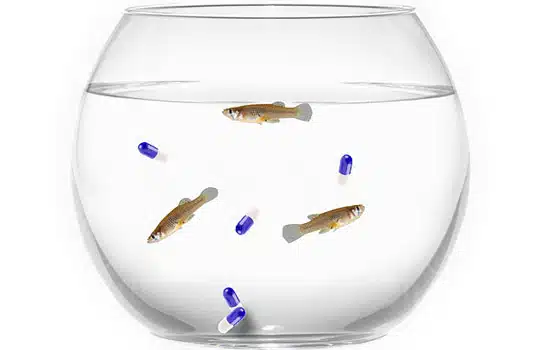Antidepressants are making their way into our lakes and rivers—and they’re making freshwater fish less fazed by predators.
Jake Martin, a PhD candidate at Monash University, looked at how the eastern mosquitofish (Gambusia holbrooki) responded to the threat of a predator when they had been exposed to the antidepressant fluoxetine (using levels similar to those already found in some waterways).
He found that dosed up fish were more active in the presence or absence of a live predator, and entered the striking range of the predator more quickly.
“Exposed fish were less stressed by a simulated predator strike, returning to normal swimming behaviour more quickly. These changes are likely to make them more venerable to being eaten,” Jake says.
“More broadly, these findings highlight the potential for pharmaceutical drugs to affect whole ecosystems, by changing the dynamics of predator-prey interactions.”
Approximately one in every 10 pharmaceutical products currently manufactured has been detected in the environment. Jake says that the very same things that make them useful as medications—such as their ability to act at low dosages and resist being degraded—make them especially harmful as pollutants.
“In 2016, more than 1.7 million scripts for fluoxetine were filled here in Australia alone. Further, fluoxetine has also been repeatedly detected in the Australian environment, including estuaries in Sydney Harbour.”
These drugs make their way into freshwater systems when a proportion is passed in their urine. After the toilet is flushed, they’re funnelled through the wastewater treatment system, eventually ending up in lakes and rivers.
Despite worldwide recognition of pharmaceutical pollution as an emerging environmental problem, Jake says we know very little about the environmental effects of many drugs present in aquatic ecosystems.
The study was published in Environmental Pollution.
Read more at: www.monash.edu/news/articles/antidepressants-a-death-trap-for-our-fish
Banner image credit: Adam Martin





 Fresh Science is on hold for 2022. We will be back in 2023.
Fresh Science is on hold for 2022. We will be back in 2023.